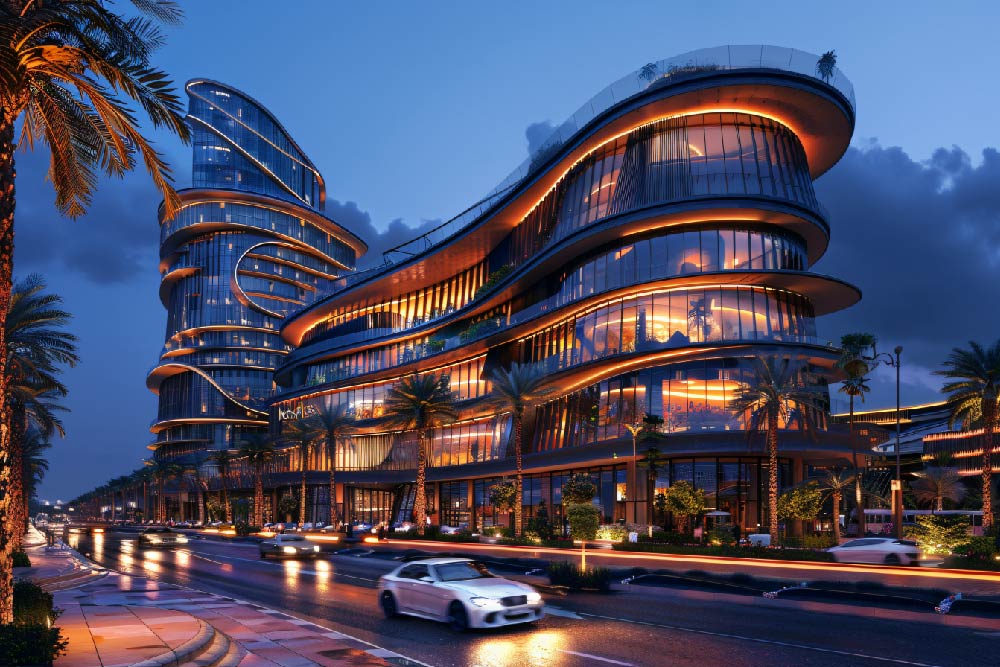
Across India’s top real estate markets, a new type of buyer is emerging—one who sees ultra-luxury real estate in India not just as a prized possession, but as a planned component of long-term wealth preservation. What was once viewed as a reward for success is now being evaluated through the lens of return potential, capital security, and generational transfer. These aren’t just homes anymore—they’re carefully selected, performance-backed assets in a well-diversified financial portfolio.
This transformation is backed by strong market data. In 2025, 55% of HNIs and UHNIs cited capital appreciation as their primary reason for investing in luxury real estate, up from 44% in 2024 (Business Standard). In other words, real estate investment by HNIs and UHNIs is not just about buying homes—they’re buying into long-term value.
With the appetite for capital appreciation growing stronger among HNIs and UHNIs, the shift is clear: luxury is being repurposed as strategy.
Why More HNIs Are Turning to Ultra-Luxury Real Estate
To understand why ultra-luxury real estate in India is being repositioned as a wealth preservation tool, we must start with the shift in investor intent. Gone are the days when high-end homes were acquired primarily for their aesthetic or lifestyle pull. Today’s luxury buyers, especially HNIs and UHNIs, are entering the market with sharper intent:
- Safety over speculation: Unlike volatile financial instruments, luxury homes provide a tangible hedge against inflation and currency depreciation.
- Legacy outlook: Many purchases are made with succession, inheritance, or long-term family use in mind.
- Reputation of the asset: Global branding, prime addresses, and curated communities contribute to the perceived durability of value.
This mindset shift—from lifestyle acquisition to long-term asset selection—has also redefined how HNIs are leveraging their luxury homes. It’s no longer just about owning prime real estate, but about optimising its financial potential.
From Homes to Yielding Assets: Luxury as Income-Generating Real Estate
The evolving treatment of luxury homes doesn’t stop at capital preservation. When optimised correctly, ultra-luxury homes are becoming performance assets, offering attractive yields alongside emotional and lifestyle value. Especially in high-demand locations or Branded Residences in India, they’re generating sizeable returns.
- Rental potential: Professionally managed properties, especially branded ones, can yield 5–7% annually in top markets (Economic Times).
- Branded rentals: Aligning with global hospitality or real estate brands ensures both tenant quality and operational ease.
- Asset appreciation + returns: This dual benefit positions ultra-luxury homes as one of the few income-generating luxury assets offering both value retention and ongoing income.
- Short-term leasing: Vacation homes and high-end city apartments can be monetised through global platforms, unlocking short-stay potential.
This yield-driven approach is strengthening real estate’s position within diversified portfolios. For many HNIs, these properties now sit alongside equities, bonds, and alternates—not just as lifestyle holdings, but as performance-driven capital plays with high-end real estate ROI.
Wealth Diversification Is Driving Capital into Real Estate
For India’s HNIs and UHNIs, the portfolio mix is evolving. Equities and private investments still play a role, but real estate investment by HNIs and UHNIs is being reintroduced as a core allocation. HNIs are now allocating a larger share of their portfolio to real estate, particularly in the premium and ultra-premium segments (Financial Express).
Here’s what’s driving this shift:
- Diversification from volatile assets: Real estate offers a hard asset alternative to equity markets.
- Global parity: India’s wealthy mirror global models, where real estate forms a core part of family wealth.
- Control and visibility: Compared to other investments, real estate offers more control over performance, use, and monetisation.
This strategic reallocation of wealth into real estate is part of a wider trend. As India’s market matures and buyer sophistication deepens, the ultra-luxury segment is fast becoming a must-have in modern wealth management.
From Aspirational to Essential: Why the Luxury Market Will Hold
Looking ahead, the fundamentals supporting luxury real estate investment in Pune and other metro and Tier 1 cities remain solid. The Indian real estate sector is projected to touch $1 trillion by 2030, with residential making up a significant portion of this growth (Financial Express).
And as investment continues to mature, so will the nature of luxury real estate:
- It will move beyond metros into second cities with rising affluence.
- Branded Residences in India will become more prominent, offering professional asset management and global alignment.
- The buyer profile will further expand to include first-gen entrepreneurs, digital economy leaders, and family office structures.
What was once a niche asset class is now on its way to becoming one of the most reliable wealth preservation tools for India’s elite.
At SQUAREA, we guide investors in identifying ultra-luxury real estate in India that offers more than a signature address. They deliver long-term capital preservation, high-end real estate ROI, yield opportunities, and legacy value. Whether you’re reallocating capital, entering a new market, or acquiring a family asset with future-proof potential, our advisory-led approach connects you to India’s most credible ultra-luxury real estate opportunities.
To explore how the right property can preserve and grow your wealth, reach out to us at hello@squarea.io or call +91 90 9641 9641.




